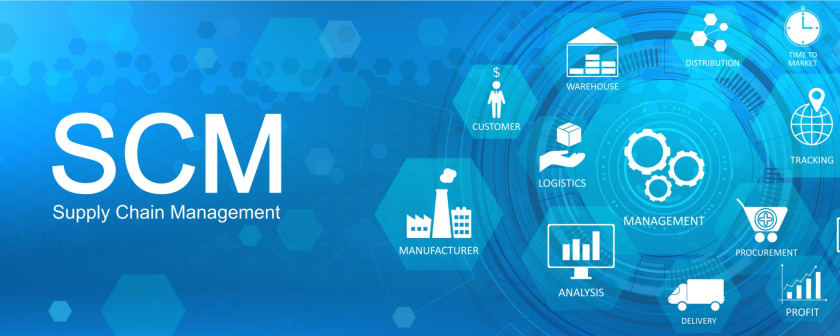5 Helpful Tips and Softwares That Will Help Meet Supply Chain Challenges



Supply Chain Management
A key aspect of any business is its Supply Chain. Ensuring the correct raw materials are available at the right time, minimizing storage costs, and yet being able to deliver the final products when the customer wants to purchase, are the essential components of a well-designed supply chain. The presence of a robust supply chain is as critical in the fashion industry as it is in any other business.
In an industry that thrives on short seasonal cycles, like the fashion industry, an efficient supply chain can be the make-or-break differentiator. Thus, the need for proper Supply Chain Management is critical to success in the industry. Any brand – be it a legacy brand or a new entrant – cannot afford to neglect its supply chain. If you are a fashion brand, this is the best time to understand supply chain and invest in supply chain management practices.
Benefits of Supply Chain Management
For anyone in business, irrespective of the scale of it, supply chain is not a new concept. Yes, you may not be familiar with the theoretical terminology associated with the practices, but you must have dealt with its constituents. When you are placing an order for the fabric or accessories for your new collection, you are interacting with a part of the supply chain. When you are making transportation arrangements to deliver your finished designs to the retailers, you are dealing with the supply chain. There are many more components of the chain that complete the entire journey of your products.
As you can see, it is an integral part of your overall business operations. Thus, laying out and following supply chain management practices can bring about a huge positive impact on your business. Some immediate benefits of supply chain management include the following.
- Seamless manufacturing process.
- Reduced delays.
- Improved availability of materials and final stock.
- Clear idea about stock availability.
- Cost optimization.
- Hassle-free transportation and clear visibility at all stages.
- Better Return on Investments
Supply Chain Challenges

The benefits of Supply Chain Management are numerous and hence should not be ignored. There are several great supply chain softwares available in the market that help businesses track and improve their supply chain practices. The best supply chain software is based on the most prominent supply chain challenges and provides a solution to address them. Before getting into the details of how SCM software can solve the problems, let us take a look at some common supply chain challenges.
- Demand Forecasting – One of the biggest challenges facing any business is to forecast the demand for their products. Knowing which products will sell in what quantity and at which particular time can help businesses focus on manufacturing only those products. However, it is not as easy to predict, since consumer demand may change at any time, depending on several factors. Yet, demand forecasting based on data points can help get a better estimate for production planning. An inaccurate forecast may cause several associated problems like higher lead time for goods actually in demand, space unavailability for in-demand products, and the overall burdening of with unwanted
- Space Management – Whether you are dealing with raw materials before manufacturing, or the finished products that need to be stored at warehouses, space is a premium resource. If you are producing too much, you end up paying higher for the space than required. If you produce too little, you miss out on potential sales. Thus, getting the right space to store the products to minimize lead times is a major challenge faced by most supply chains.
- Material Tracking – Ever faced a situation where you ended up ordering the same accessories twice, or the fabric you planned your next collection on was already used up before production could begin. These are two common examples of what can happen if you do not have clear visibility on the status of raw materials for your production. This is a major challenge faced by most supply chains – real-time material tracking to help plan the production process.
- Inventory Management – A similar problem at the other end of the supply chain is that of inventory management. Knowing exactly how many units of your bestseller outfit you have available in the store, whether a particular size is available in the warehouse, or if a collection is sold out at your most popular retail outlet can help you optimize sales at each of these touchpoints. This is why inventory management is a critical component of any good SCM software.
5 Tips to overcome Supply Chain Challenges

The challenges listed above clearly articulate the impact any supply chain disruption can have on your bottom line. Thus, whether you are a brand manager or an aspiring designer looking to scale up operations, you must be ready to address the main supply chain challenges. Here are a few handy tips that can help you achieve this.
- Diversify your sourcing options to the maximum possible extent.
The ultimate goal of any business, including a fashion business, is to maximize profits. To achieve that, the business needs to ensure that they are producing the maximum goods at optimized prices. If you are sourcing from a fixed number of suppliers, you may do well till your suppliers can meet your requirements. Any challenge at their end may have a direct impact on your business. To avoid such a situation, diversify your sourcing options as much as possible. This will help you tide over times when one of your suppliers is facing any challenges, without impacting your business directly.
- Handle disruptions with real-time tracking information.
A good supply chain is dependent on many different players and their interactions. Not knowing what is happening in real-time may land you in a situation where you discover a problem in one of the components so late that you cannot do anything about it. For example – if there is a sudden challenge with one of your transportation partners and you get to know about it after a couple of days, your shipment would already be late by that much. Instead, with real-time tracking, you could have gone for an alternate partner thereby minimizing the delay.
- Emphasize Data-Driven Decision making.
A lot of decisions in the business world, especially in the fashion industry, are still based on gut feel and personal experiences. While this may work for some time, the effectiveness is lost as it becomes too dependent on the individual with those experiences. Instead, decisions made based on valid data points can help eliminate the indeterminate factors and give you more tangible results. Thus, if a raw material supplier is consistently late as per the data, you can decide to reduce their order quantity to minimize delay in your production cycle.
- Prioritize Digitization of all your Supply Chain Practices.
The more data that is available to the brand, the better is the decision making. However, ensuring data accuracy and processing large amounts of data manually is prone to errors. Instead, digitize as much data collection as you can. This will help make objective decisions based on accurate data. The biggest advantage of any Supply Chain Software lies in its capabilities to not only capture but to analyze data and turn it into actionable insights.
- Be open to adaptation whenever required.
There is an adage that states, “why fix what isn’t broken!” That, however, is not true when it comes to supply chain practices. If you decide to postpone changes till you encounter a problem, your business will be severely impacted. Thus, keep ahead of the changes and stay updated on the innovations in the industry. Not just that, be flexible and adapt to the changes wherever possible, as this will give you an advantage over late movers.
Useful SCM Software
Undoubtedly, Supply Chain is a crucial component of business success, and the digitization of supply chains is the first step any business must take. This transition is made easy with great Supply Chain Software like E2open, SAP SCM, Oracle SCM, Logility, Watson Supply Chain, and Perfect Commerce. Some essential components of any good SCM software include the following.
- Inventory Management.
- Warehouse Management.
- Logistics.
- Analytics and Insights.
The recent emphasis on analytics as a critical component of SCM software can be attributed to reports like the one from Gartner mentioning, “Through 2024, 50% of supply chain organizations will invest in applications that support artificial intelligence and advanced analytics capabilities.” Thus, when selecting the right supply chain software for your company, ensure selecting one with these capabilities.
Wrapping Up
In this article, we went through the importance of Supply Chain Management for brands operating in the fashion industry. We also shared some tips to address common supply chain challenges, and the best software available to enhance supply chain management in your organization. If you liked this information, there is a lot more available on Fashinza. An end-to-end B2B platform for all players in the fashion industry, here you can find peers, suppliers, manufacturers, and brands interacting with each other. You can find the materials you are looking for, place an order, and get them delivered to your facility. Or, you can read detailed articles like this, on all things relevant to the industry. To find more information, and become a part of the community, visit the Fashinza website or app today.



















